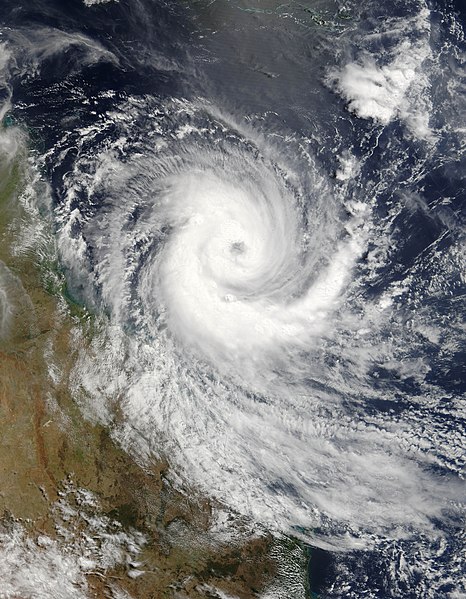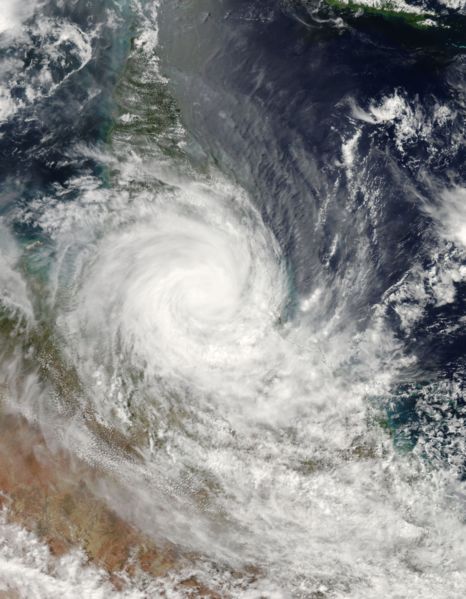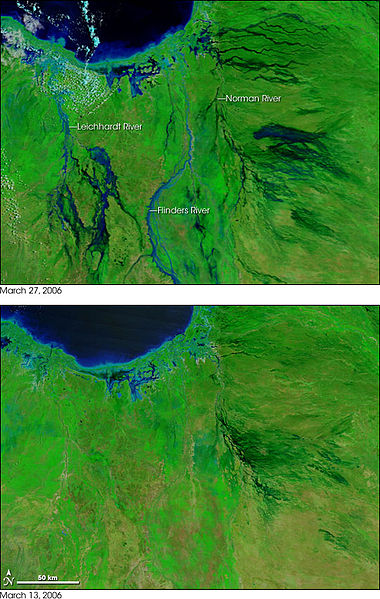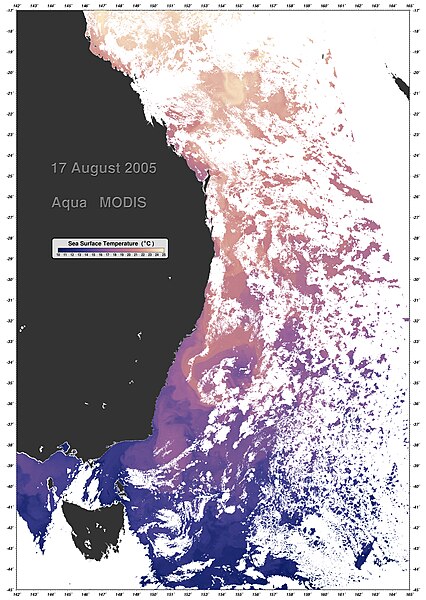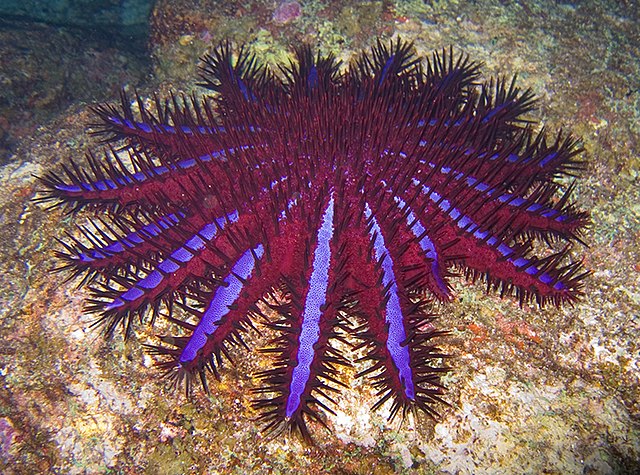Severe Tropical Cyclone Larry was a tropical cyclone that made landfall in Australia during the 2005–06 Southern Hemisphere tropical cyclone season. Larry originated as a low pressure system over the eastern Coral Sea on 16 March 2006, and was monitored by the Australian Bureau of Meteorology in Brisbane, Australia. The low-pressure area organised into a tropical cyclone two days later and quickly strengthened into a Category 4 storm on the Australian tropical cyclone scale. Larry made landfall in Far North Queensland close to Innisfail, on 20 March 2006, as a Category 5 tropical cyclone on the Australian scale, with wind gusts reaching 240 kilometres per hour (150 mph), before dissipating over land several days later.
Larry intensifying and approaching Queensland on 19 March
Larry making landfall on Queensland coast
False-color image showing the extent of flooding in the area around Normanton and Karumba, Queensland. Green indicates vegetation and blue indicates water. The top image is two weeks after the bottom.
Photo taken by a resident in Edmonton, an outer suburb of Cairns in the aftermath of the storm, on 20 March 2006.
The Coral Sea is a marginal sea of the South Pacific off the northeast coast of Australia, and classified as an interim Australian bioregion. The Coral Sea extends 2,000 kilometres (1,200 mi) down the Australian northeast coast. Most of it is protected by the French Natural Park of the Coral Sea and the Australian Coral Sea Marine Park. The sea was the location for the Battle of the Coral Sea, a major confrontation during World War II between the navies of the Empire of Japan, and the United States and Australia.
Thermal profile of the East Australian Current
Tropical Cyclone Larry over the Great Barrier Reef, 19 March 2006
Corals on Flynn Reef near Cairns
Crown-of-thorns starfish

